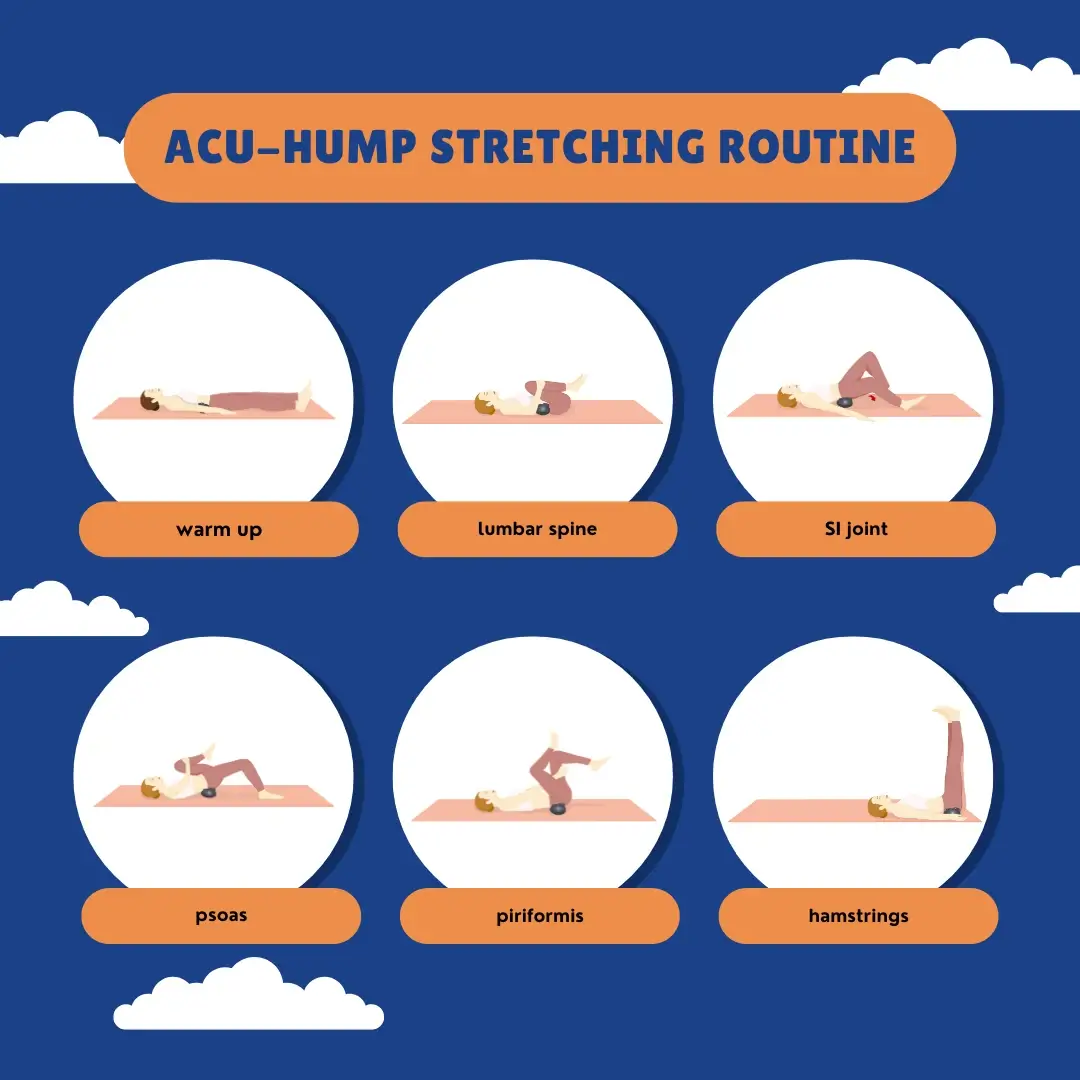Piriformis syndrome is a common condition that occurs when the piriformis muscle irritates or compresses the sciatic nerve. While this condition can be uncomfortable and disruptive to daily life, there are effective stretches and exercises that can help alleviate symptoms and improve overall mobility.
In this article, we will explore some of the best stretches for sciatica pain in the buttocks and how incorporating these stretches into your daily routine can help you regain your comfort and ease of movement.
What is piriformis syndrome?
Before we dive into the best stretches for piriformis syndrome, let’s first understand what the piriformis muscle is and what this issue entails.
The piriformis muscle is a small, pear-shaped muscle located in the buttocks that helps to stabilize the hip joint and rotate the thigh bone outward.
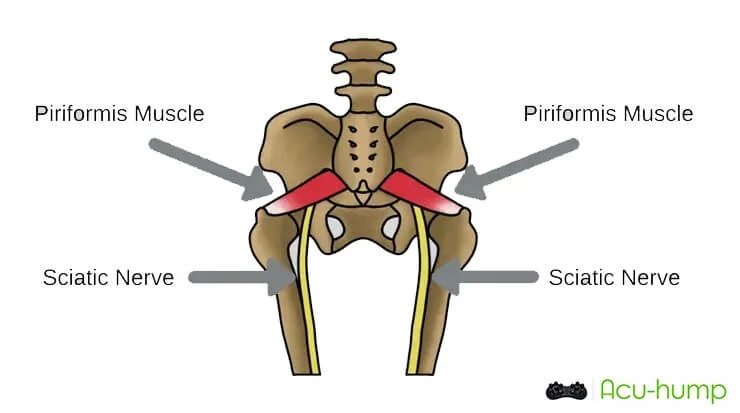
Acu-hump® Relieve Piriformis Pain
When this muscle becomes tight or inflamed, it can compress or irritate the sciatic nerve that runs beneath it, resulting in a condition known as piriformis syndrome. There are several reasons why it may occur, such as overuse of the muscle, traumatic injury, or even sitting for prolonged periods. Regardless of the cause, the resulting discomfort and pain can be managed through targeted stretches and exercises that target the piriformis muscle.
Why the stretching works for piriformis syndrome?
When it comes to treating it, stretching is one of the most effective methods available. This is because the pain and discomfort associated with this condition stem from the fact that the piriformis muscle becomes tight and inflamed, leading to compression of the sciatic nerve. In order to alleviate this issue, it is essential to loosen the piriformis muscle and restore its vitality, and targeted stretching is an ideal way to do so.

By engaging in regular stretching movements, individuals can promote movement in the muscle and lengthen it, helping to release tension and increase flexibility. This, in turn, promotes improved blood flow and easier overall movement. Additionally, stretching can help improve posture and prevent future muscle imbalances, which are often contributing factors in the development of piriformis syndrome symptoms.
Deep massage techniques such as compression, and myofascial release can complement stretching by targeting specific muscle groups and gently releasing tightness and muscle knots. This combination can be particularly effective in relieving chronic muscle pain and reducing muscle imbalances.
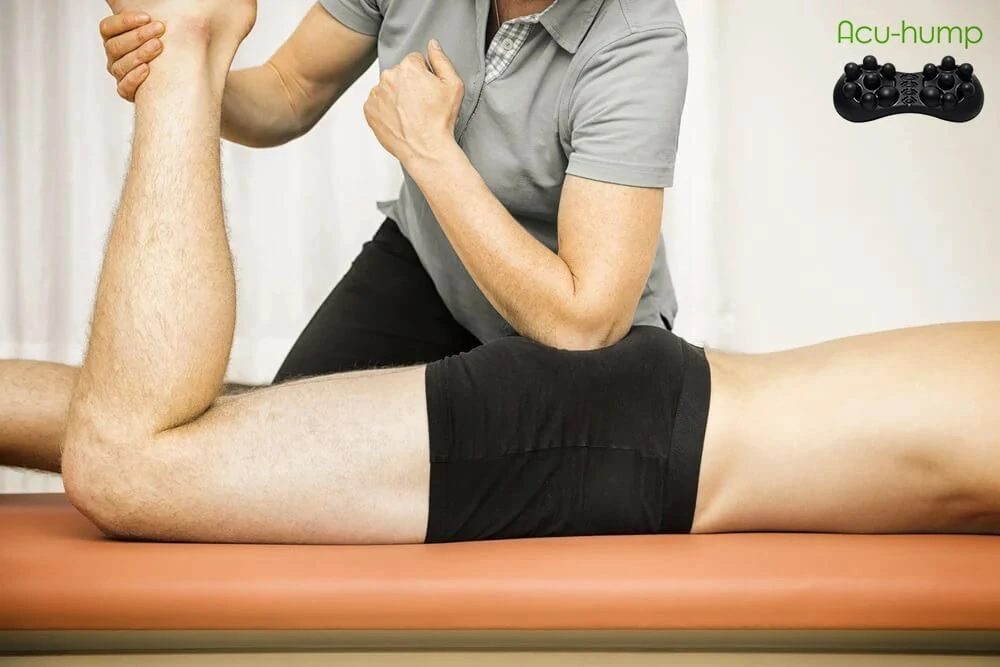
With these benefits in mind, individuals can take a proactive approach to their wellness by incorporating targeted stretching practices into their daily routine and experiencing the transformative benefits over time.
3 Main Piriformis Stretch Poses
When it comes to stretching the piriformis muscle, there are three main techniques that are commonly utilized: the supine piriformis stretch with foot on the ground, the seated piriformis stretch, and the standing piriformis stretch.
- Stretch piriformis supine cross leg
The supine piriformis stretch with foot on the ground involves lying on your back with both knees bent and feet flat on the ground. From there, cross one leg over the other and gently pull the crossed leg towards your chest until you feel a stretch in your buttock region. Hold this position for around 20-30s and then switch sides and repeat.
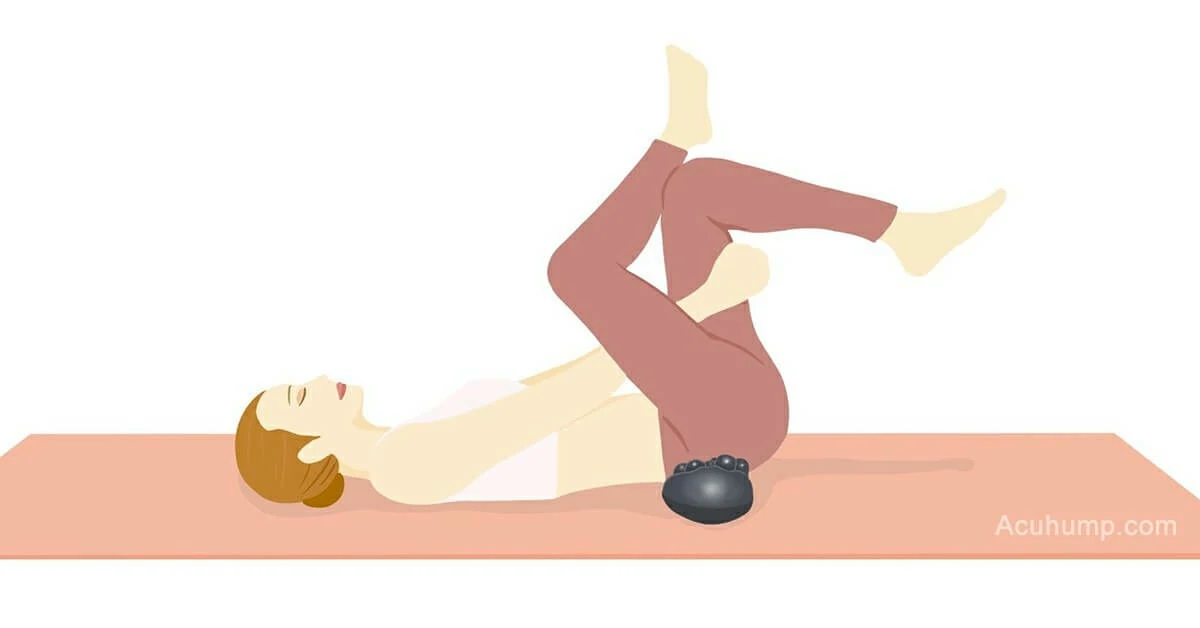
- Seated piriformis stretch
The seated piriformis stretch can be performed while sitting in a chair with your feet flat on the ground. Cross one ankle over the opposite knee and gently press down on the crossed knee until you feel a stretch in your buttock region. Hold for around 20-30 seconds, switch sides and repeat.
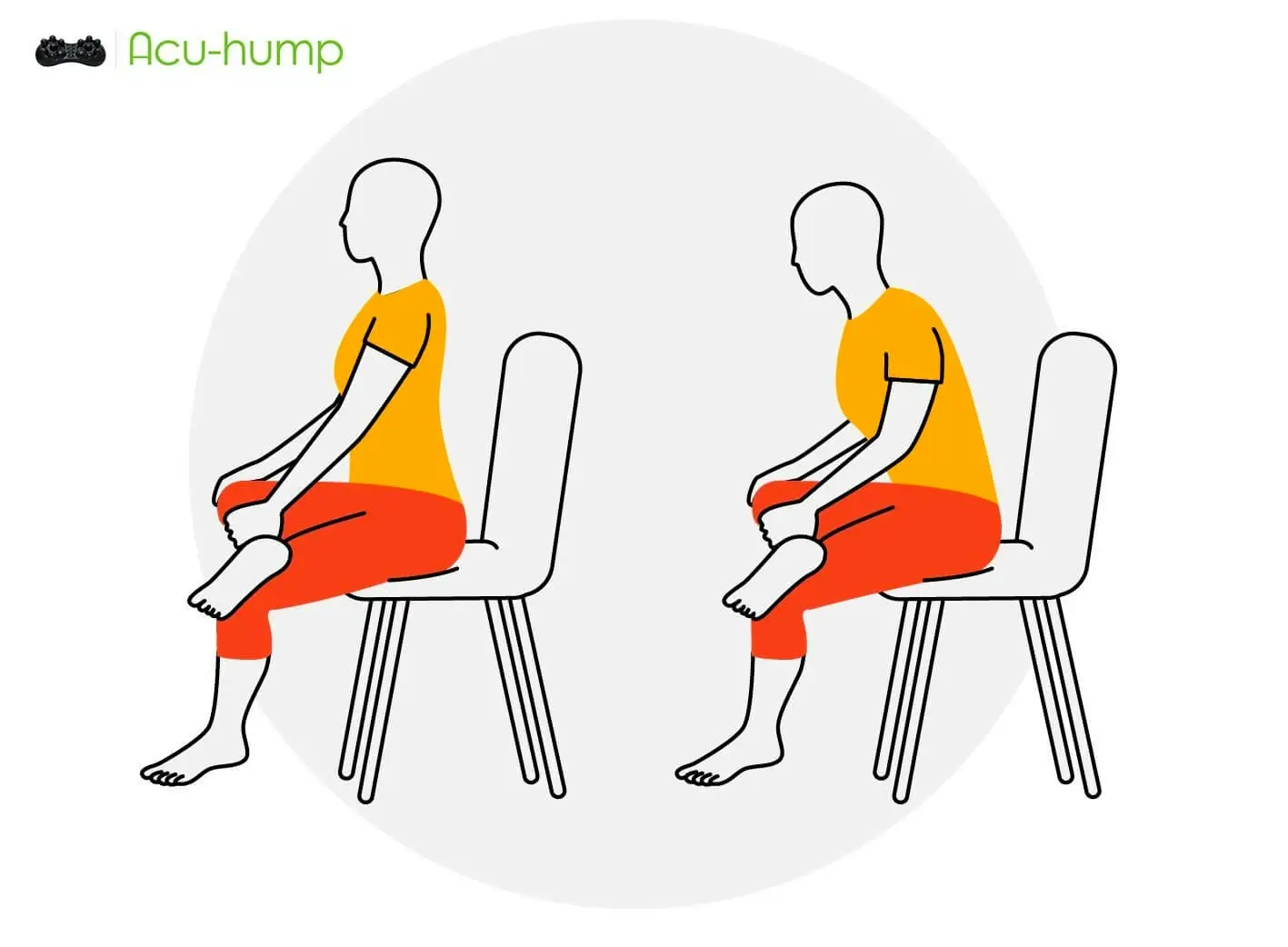
- Standing piriformis stretch
Lastly, the standing piriformis stretch involves standing upright with feet hip distance apart, crossing one leg behind the other and bending forward at the hips until you feel a stretch in your buttocks. Hold for 20-30 seconds, switch sides and repeat. These stretches can be done daily or as needed to help alleviate the pain and discomfort associated with piriformis syndrome.

Just making these attempts falls short of what’s needed.
Why do you need to work harder for stretching?
Piriformis syndrome can have various causes, but weak buttock muscles is a major contributing factor. If the lower back muscles or core muscles are weak, the buttock muscles may end up compensating by exerting more force than they are capable of.
That’s why when it comes to stretching and exercising, it’s important to not only target the piriformis muscle but also other muscles that are closely related to the buttock area. It’s crucial to incorporate exercises that strengthen the lower back and core muscles into your training plan in order to build up strength in the entire pelvic region.
With a comprehensive exercise plan that targets all relevant muscle groups, you’ll be on your way to a stronger and more functional pelvic area, reducing the likelihood of developing piriformis syndrome.
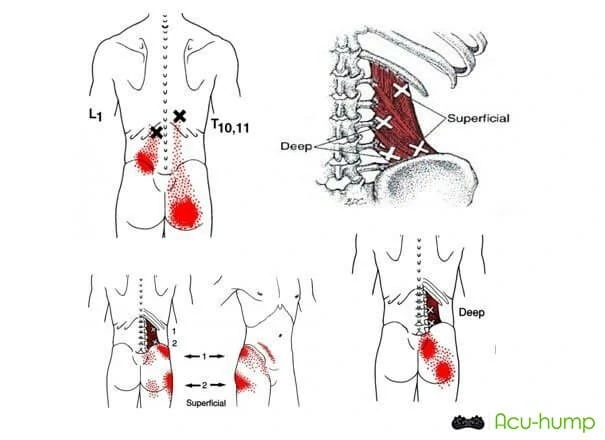
Acu-hump Stretching Routine: Release the Back to Butt
Incorporate this 10-minute stretching routine into your daily regimen to achieve overall relaxation and flexibility in your lower back to hip muscles. Consisting of six targeted movements, this routine will help release tension and promote improved blood flow. Start your journey to improved mobility and reduced muscle imbalances now.
1# Step: Lower Back
Acu-hump is an acupressure massage stretcher for releasing muscle tension, particularly in the QL muscles located in the lower back region.
To use Acu-hump, place it under the lower back area with the taller side near the head and aligned with the QL muscles. Lie on top of the Acu-hump with your legs straight and allow it to work its way into tight, knotted muscle tissue.

Acu-hump: 30-day return policy. No risk for you.
As the Acu-hump applies pressure to these areas, you may experience some degree of discomfort, which can be an indication that the tool is effectively releasing tension in these areas. The more tightly bound the muscle, the more intense the sensation may be.
2# Step: Lumber Spinal
The Acu-hump massage stretcher is a versatile tool that can help alleviate various types of lower back pain, including bulging disc, herniated disc, sciatica pain, and Cauda Equina Syndrome. To use the Acu-hump effectively, follow these simple steps:
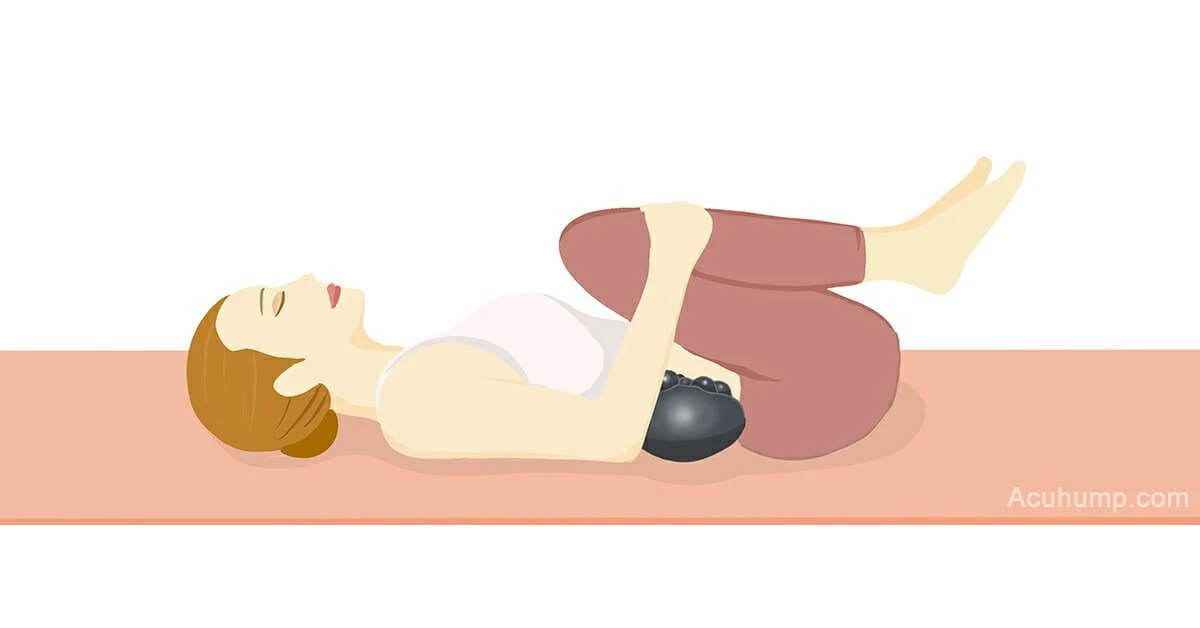
Acu-hump® Relieve Piriformis Pain
Step 1: Lie flat on a hard surface such as the floor, as this provides enough pressure to help engage the muscles.
Step 2: Next, place the Acu-hump massage stretcher under your spine, ensuring that the high side is close to your head and in alignment with the affected area.
Step 3: Hug your legs to your chest and hold for around 30 seconds. This motion helps to gently stretch the muscles in your lower back and alleviate pain and discomfort.
Step 4: Release your hands and straighten your legs, holding for another 30 seconds. This position helps to continue to stretch the muscles in your lower back and promote increased circulation.
Step 5: Repeat steps 3 and 4 as desired to achieve optimal results.
3# Step: SI Joint
The Acu-hump massage stretcher is a helpful tool for relieving pain caused by Sacroiliac Joint Dysfunction and Pubic Symphysis issues. To use the Acu-hump effectively, follow these simple steps:
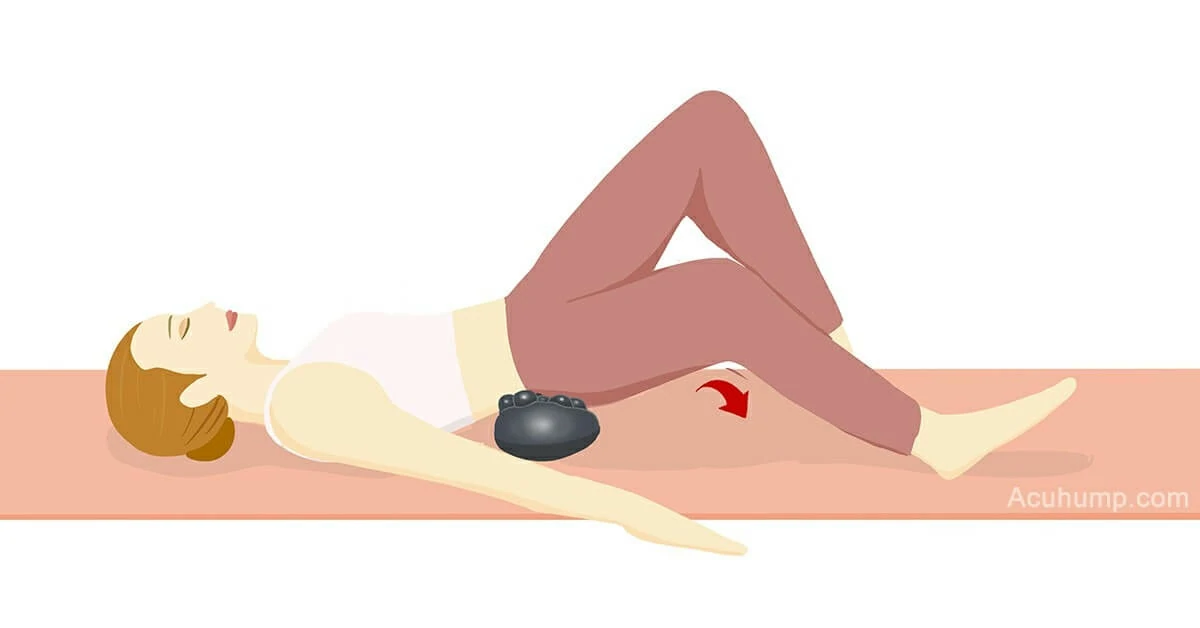
Acu-hump: 30-day return policy. No risk for you.
Step 1: Lie flat on a hard surface such as the floor. This will help to provide enough pressure to help target the affected area.
Step 2: Place the Acu-hump massage stretcher under your SI joints, ensuring that the high side is close to your head and in alignment with the affected area.
Step 3: Bend your legs, placing a slight distance between your knees that’s slightly…wider than your shoulders.
Step 4: Holding the left leg steady, slowly swing your right leg towards the ground. Hold the position for around 15 seconds before retracting your right leg.
Step 5: Repeat step 4, but with your left leg this time. Each time you swing your leg towards the ground, remember to hold for around 15 seconds.
Acu-hump: 30-day return policy. No risk for you.
4# Step: Psoas & Hip Flexor
Start by lying on your back with your knees bent and your feet a few inches away from your buttocks. Lift your hips into a low bridge and place the Acu-hump horizontally on its medium setting under your sacrum.
With your left foot firmly planted on the ground, bring your right knee towards your chest. For three deep breaths, gently push your right knee away from your body while placing one or both hands on top of your right thigh.
Slowly lengthen your right leg straight out in front of you, pressing down lightly on the thigh with your right hand. As your leg relaxes, allow the right thigh to lower towards the ground.
Bend your right knee and place your foot back on the mat, then switch to the opposite side.
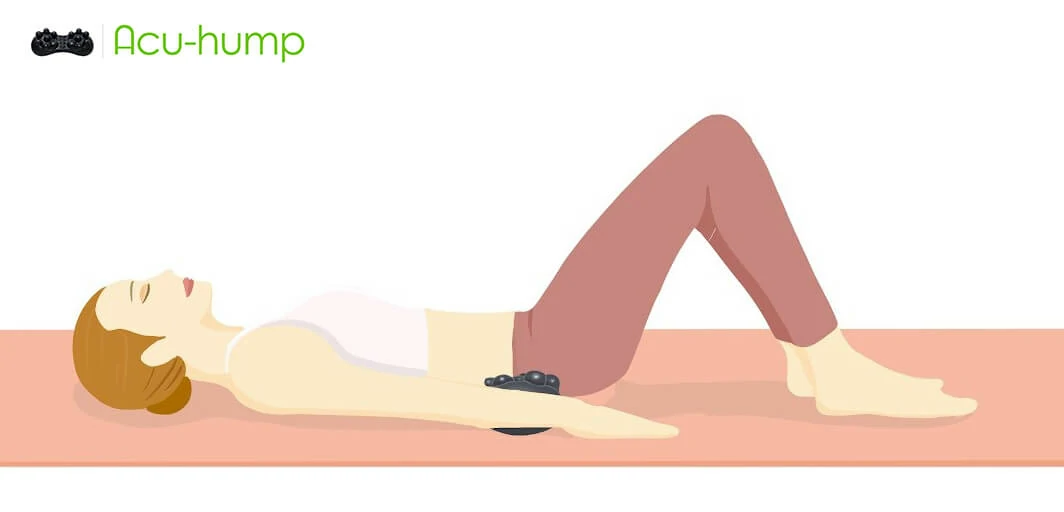
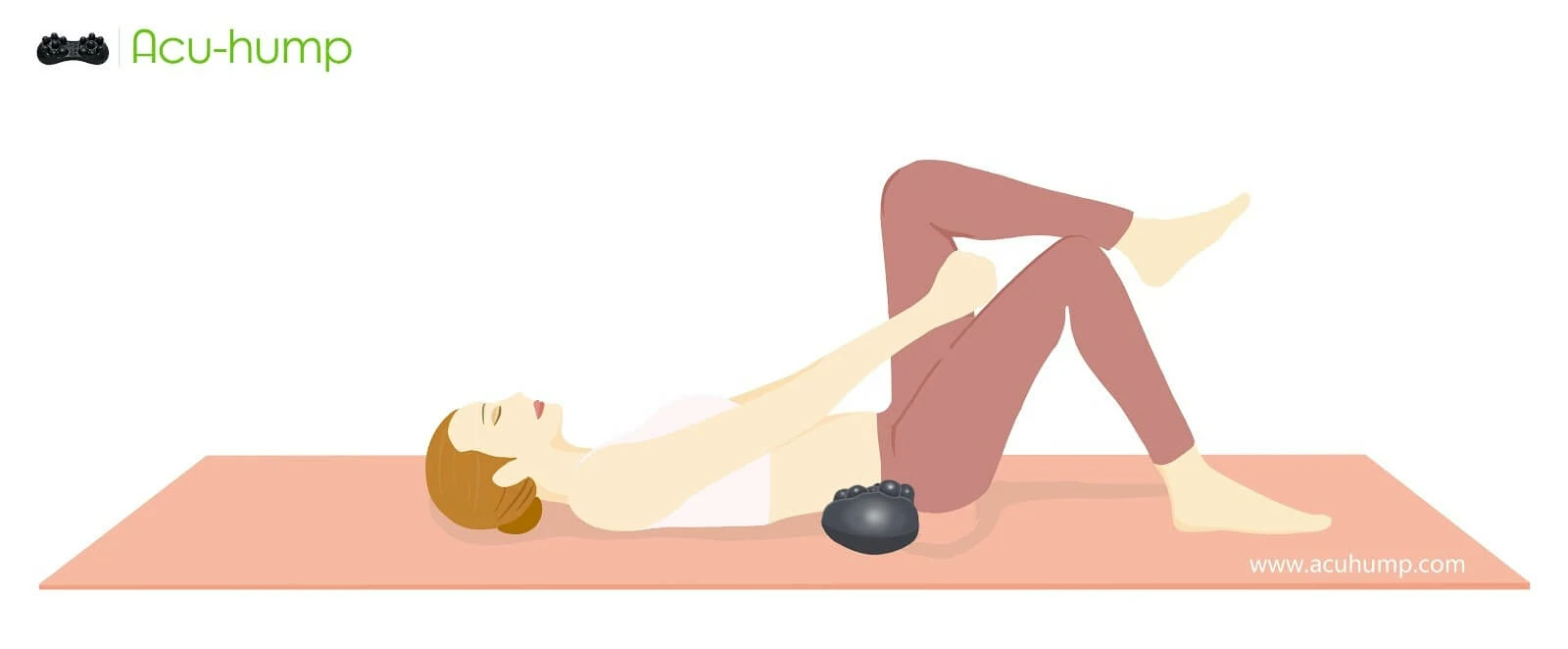
After finishing the second side, lengthen both legs together, keeping them slightly separated but still parallel. Place your hands gently at the top of your thighs and press down, being careful not to hyperextend your lower back. Breathe deeply and hold the position for several breaths, or even up to a few minutes if you feel comfortable doing so.
Acu-hump® Relieve Piriformis Pain
5# Step: Figure 4 Piriformis Stretch
The Acu-hump is an excellent tool for performing the figure 4 stretch, which targets the muscles in your hips and lower back. When using the Acu-hump for this stretch, it’s best to begin by lying flat on your back with your knees bent and both feet on the ground.
Next, place the Acu-hump under your sacrum with the high side of the massage stretcher facing your head. With your left foot on the floor, cross your right ankle over your left knee in a figure 4 shape.

Using your hands, gently pull your left thigh towards your chest while keeping your right knee bent. This will help to stretch the muscles in your hip and lower back.
Hold this position for around 30 seconds before releasing and switching sides. With the Acu-hump’s assistance, you’ll be able to maintain the figure 4 position with greater ease, ultimately facilitating a deeper and more effective stretch.
Incorporating the figure 4 stretch with the Acu-hump into your daily routine can help alleviate pain and tightness in your hips, while promoting greater flexibility and mobility. Additionally, by using the Acu-hump during your stretch, you can help promote better alignment and reduce the risk of injury.
Acu-hump: 30-day return policy. No risk for you.
6# Step: Hamstrings
The sciatic nerve runs through the piriformis muscle and extend to the legs. To alleviate the pressure and tension in the piriformis muscle, it’s important to incorporate regular leg root stretching exercises into your daily routine. By stretching the leg roots, you can relax the muscles from the buttocks to the legs, reducing the pressure on the sciatic nerve and promoting greater mobility and comfort.
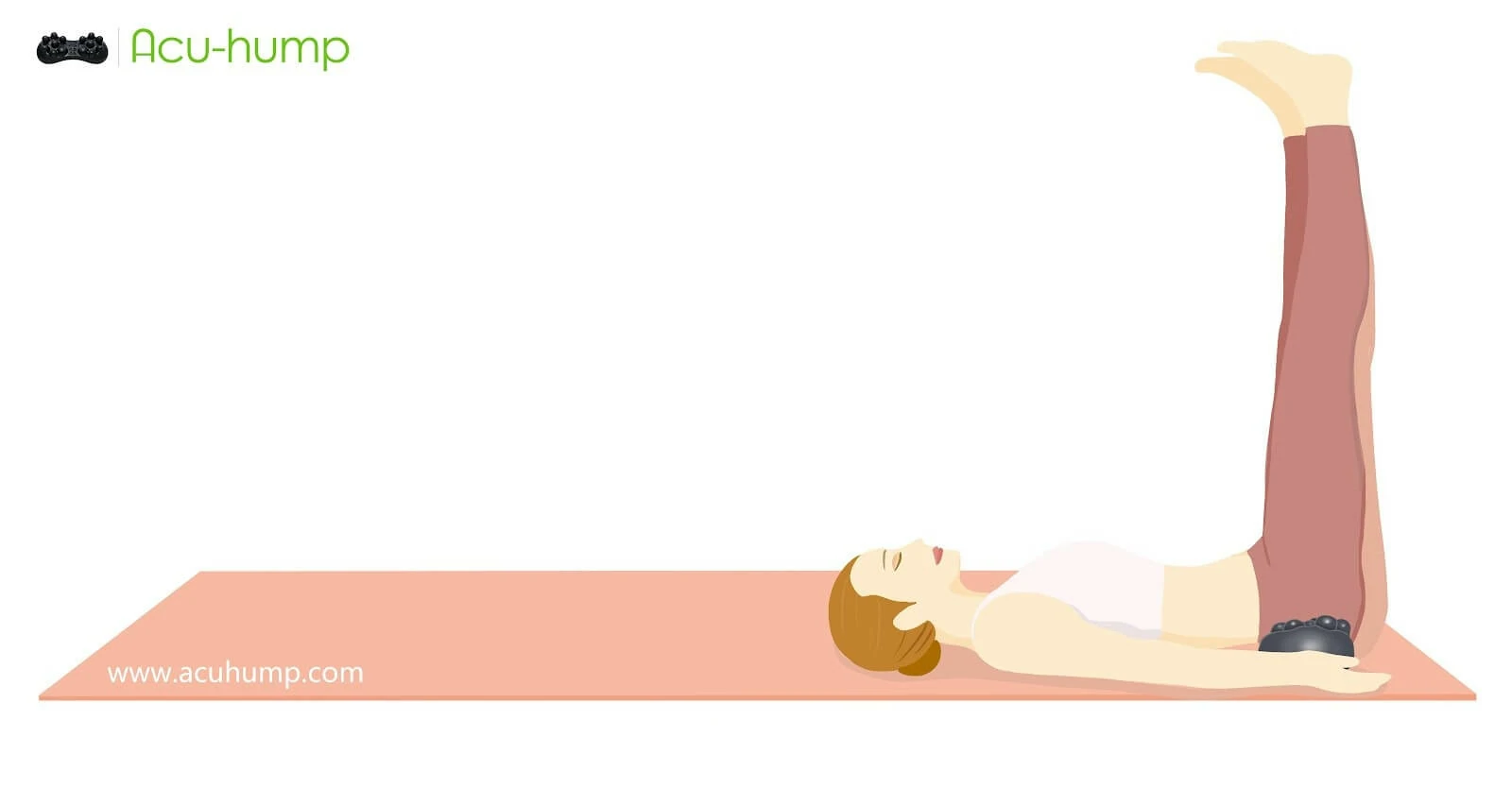
Including these stretching exercises into your daily routine can help prevent or alleviate symptoms of sciatica pain in the buttock. This can ultimately help improve your overall flexibility and reduce discomfort in your lower back and legs.
Remember to breathe deeply and listen to your body, stopping if you feel any pain or discomfort during the stretch. With regular practice, you can reduce your risk of developing or continuing to experience symptoms of sciatic nerve pain.
Scroll and download the stretching pdf (end of article) to discover more about incorporating targeted stretching practices into your daily routine.
What is Acu-hump
The Acu-hump, an acupressure stretcher that can greatly enhance the effectiveness of your stretching routine. With its unique design and functionality, the Acu-hump provides a deep massage while you stretch, targeting the muscles affected by piriformis syndrome.

Acu-hump® Release Piriformis Muscles
By combining the benefits of stretching and acupressure, this tool promotes relaxation, relieves tension, and aids in improving muscle flexibility. Experience the transformative power of the Acu-hump and take your stretching routine to the next level.
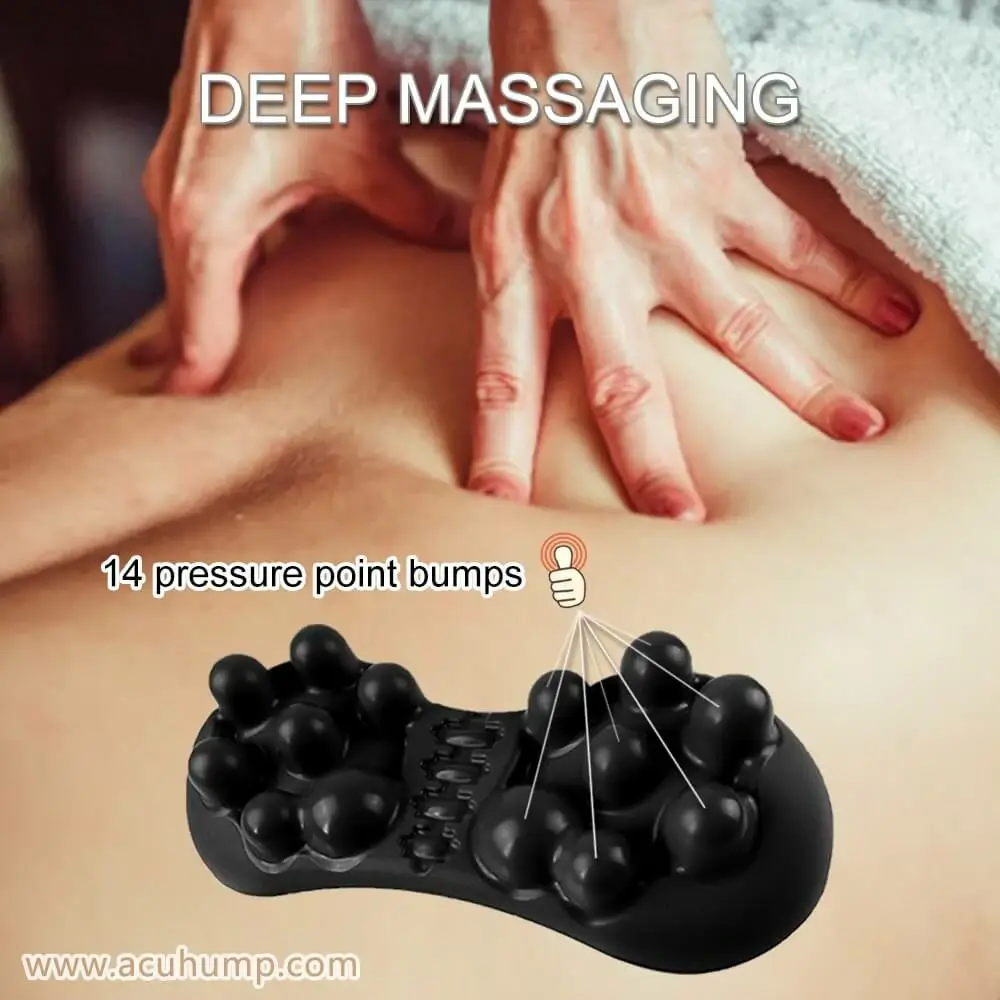
Acu-hump: 30-day return policy. No risk for you.
Don’t miss out on the opportunity to enhance your wellness journey – get your own Acu-hump today and unlock the full potential of your stretching routines.
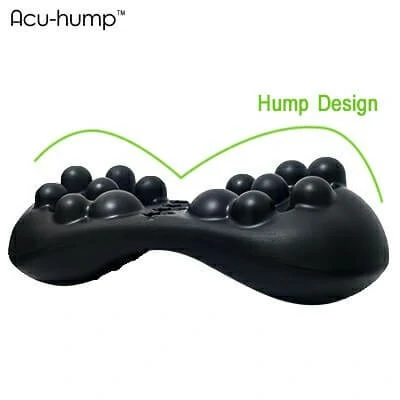
Acu-hump: 30-day return policy.
You have no risk.
Performing regular stretches for piriformis syndrome is essential to alleviate the symptoms of this condition, which can cause pain and discomfort in the buttocks, hips, and legs. Incorporating the Acu-hump into your stretching routine can be especially beneficial, as it amplifies the effectiveness of stretches for the piriformis muscle, leading to greater relaxation and muscle tension release.
When using the Acu-hump for targeted stretches to the piriformis muscle, it is essential to use proper form and listen to your body to avoid injury. With regular use of the Acu-hump, you can reduce your risk of developing or continuing symptoms of piriformis syndrome and improve your overall flexibility and mobility.
Remember that early diagnosis and consistent care can help prevent more severe symptoms from developing.

Acu-hump®
Release Butt & Lower Back
Save It to Your Phone and View It Anytime
Click to download: Piriformis Stretching Exercises for Sciatica PDF
